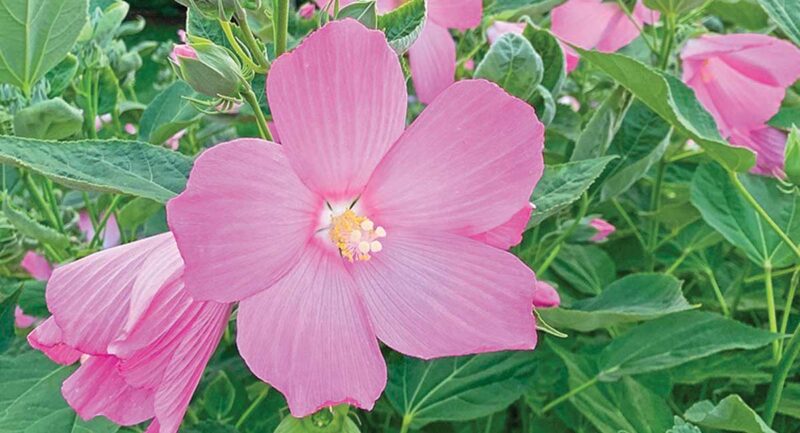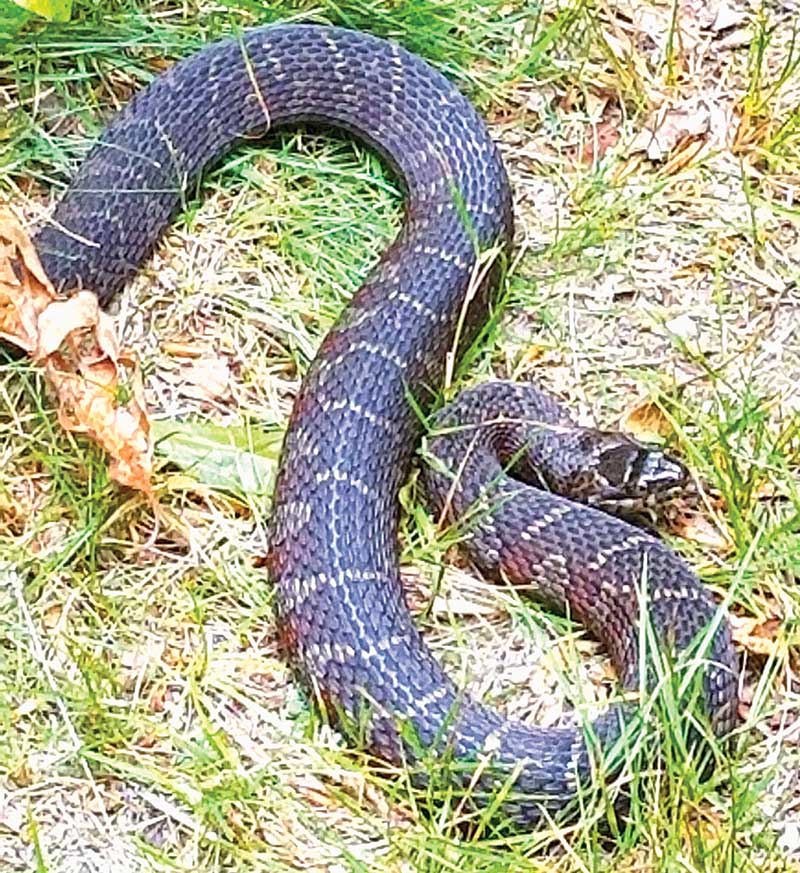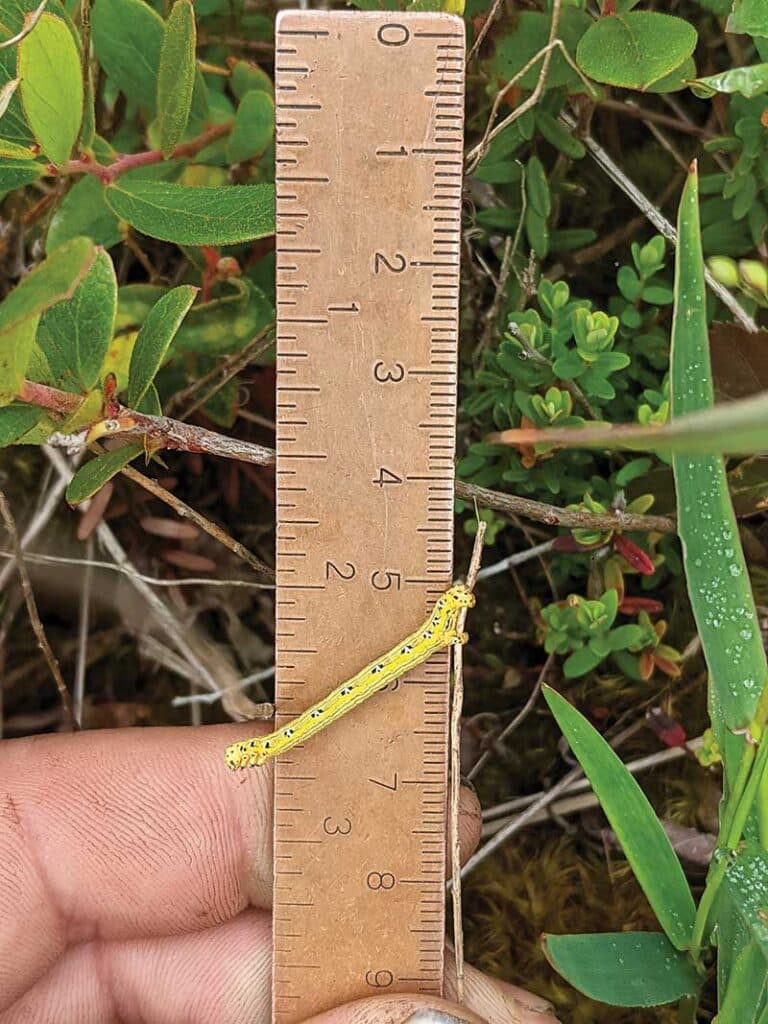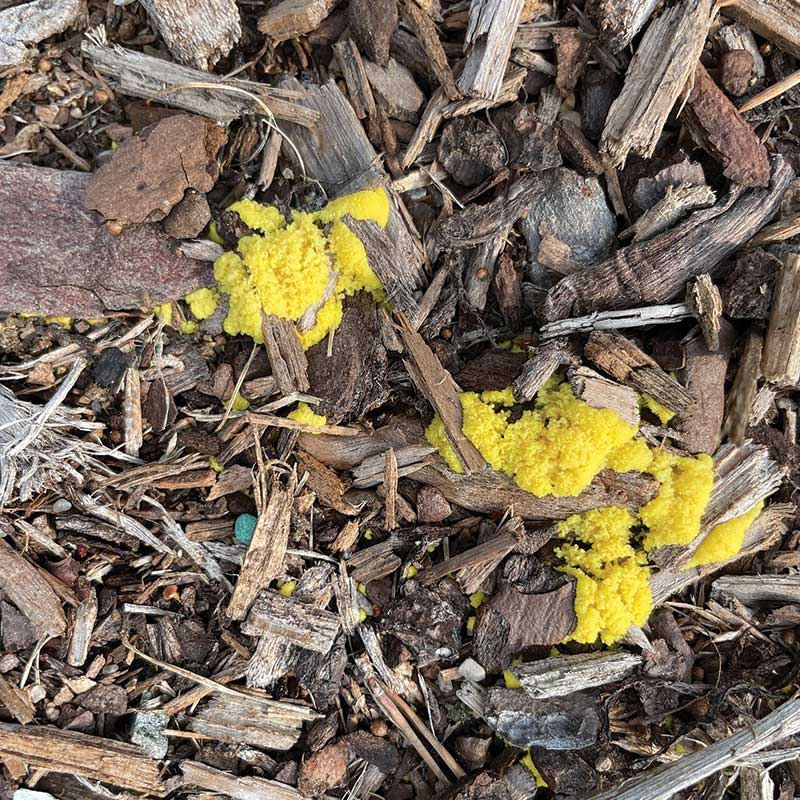by Dr. Sarah Treanor Bois
Director of Research & Education at the Linda Loring Nature Foundation
The results of the 2021 Nantucket Land Council and Linda Loring Nature Foundation BioBlitz are in and we’re sharing some highlights and interesting observations from this highly successful exploration of nature on Nantucket!
For those who didn’t read the earlier article (yesterdaysisland.com/take-the- 2021-bioblitz-challenge/), a BioBliz is basically a mad dash in a specified area to catalog as many species as possible. The 2021 NLC/LLNF BioBlitz sought to document the biodiversity of Nantucket during the month of July—a perfect month for a BioBlitz.
July being the peak of the growing season, there were all sorts of plants blooming, fruiting, and just growing in the summer sunshine. Nestling birds were fledging, turtles were nesting, and the marine life was popping! There was so much to see and record.
The 2021 BioBlitz far surpassed the original goals set forth by the Nantucket Land Council. They had hoped for 1,000 observations and 500 species. What they got in the end were 2,138 observations of some 860 species thanks to 111 volunteer participants!
Of those 2,000 observations, just about half are Research Grade. That means that the identification has been confirmed by at least one other person. These are the records that researchers use to investigate patterns of species distributions, among other things.
Throughout the month of July, organizers kept tabs on the leaderboards: both the participants and the species. For species, it looked like common milkweed would be the winner. Halfway through the month, however, the showier species started to bloom. Orange blossoms like wood lilies and butterfly milkweed garnered lots of attention, being so bright amidst the green foliage. In the end, the common yarrow (Achillea millefolium) eked in a win with one more observation than either common milkweed or the ever-present St. John’s wort. The flattopped, white blossoms of the common yarrow may not be as showy as others, but you can find it almost anywhere on Nantucket in mid-summer.
In terms of observers, Chase Mathey from the Nantucket Conservation Foundation was the leader with a whopping 226 species. The runners-up each had 146, so Chase really outdid us all. Rudy Montez was our top “non-professional” observer with 120 species—amazing contributions helping us catalog nature on Nantucket this summer.
The NLC/LLNF BioBlitz is about more than just numbers. As Helen Weeks, NLC Board Member and Chair of NLC Associates, put it: “The Land Council was excited to use the July BioBlitz to both honor and celebrate our mission. Through exploring together but apart, we are able to create curiosity, foster deeper understanding, and establish a connection with both the natural world and within the local naturalist community.”
For some participants, using iNaturalist and contributing this type of information were completely new. And that was one of the goals of the BioBlitz: to help people learn more about the natural world around them. “The BioBlitz prompted me to look with fresh eyes at what I see every day, and I learned the names of some of the plants that I hadn’t ID’d before, beyond labelling them a “weed.” After the initial couple of forays around the yard, I started thinking about how to find more species. I started turning over rocks and staring at the sky. I think this was a great way to get outdoors…” said Mary Longacre, NLC member and Bioblitz participant.
Looking at a breakdown of results, a little more than half of the observations were plants. That makes sense because they stay in place for a photo. The next biggest group was insects at 20 percent of observations. Birds and fungi tied at about 6 percent of observations each. Arachnids, fish, and “other animals” round out the majority of submissions.
Looking through the records, there were about 20 state-listed species. That includes all taxa. A few favorites were the chain-dotted geometer (Cingilia catenaria), a small, yellow and black caterpillar found throughout the sandplain grasslands and heathlands this time of year. While ubiquitous on-island, this species is rare throughout Massachusetts. More visible in its caterpillar stage, this geometer will soon pupate into a small white and brown moth that will be much less visible on the landscape.
Other rare species seen during the BioBlitz include St. Andrew’s Cross (Hypericum stragulum), Northern Harriers (Circus hudsonius), and American eels (Anguilla rostrata). For rare species observations, the exact location is “fuzzy” to keep the locations of rarities private.
In addition to rare species, 14 percent of the observations were species not native to Nantucket. These include lots of garden plants, but also some invasive species like shrub honey suckle (Lonicera morrowii). European green crabs (Carcinus maenas), honey bees (Apis mellifera), and Japanese beetles (Exomala orientalis) were the top non-native species that weren’t plants.
Not all the observations were charismatic. One of my favorite was the dog vomit slime mold (Fuligo septica) which, as the name implies, resembles dog vomit. “I’m never going to look at dog barf the same” said one young participant who helped record an observation with LLNF staff. Sometimes known as “scrambled egg slime mold,” this species has worldwide distribution with visibility peaking in our region in July. It was recorded by six observers during the BioBlitz!
While we may not all care about slime molds, learning something new about the world around you can have an effect on attitudes about conservation. As Helen Weeks said: “The first step to caring about any place is just knowing and loving it. The hope is that once people notice and know who that tiny insect or plant is in their backyard, they might grow to care for it. Nantucket is a thriving, dynamic ecosystem made of people and biodiverse natural organisms, living intertwined together. We are nature, and nature is us! Once our love of the flora and fauna is established, we can feel empowered and mobilized to protect it. Thanks for taking the time to take a closer look at your world around you. Together we can work to protect and preserve our beautiful island for future generations to enjoy!”
How did participants collect all of this information? Using a free, public app (iNaturalist) participants take photos of anything they see in nature: birds, plants, fungi, animals, insects, etc. They upload the photo to submit the data. iNaturalist then suggests an identification (if you need one) based on their algorithm. If that doesn’t produce a likely ID, other volunteer reviewers identify the record. You can learn more about iNaturalist and how to observe by going to inaturalist.org.
You can check out the results of the 2021 BioBlitz for yourself on the project page at inaturalist.org/projects/nlc-llnf-bioblitz-2021.
Thanks to all of those who participated for getting out there, making observations, and supporting the Nantucket Land Council and Linda Loring Nature Foundation. Now that the BioBlitz is over, don’t stop observing and documenting. You can use iNaturalist anytime to upload photos and contribute to the information about our island’s biodiversity.






